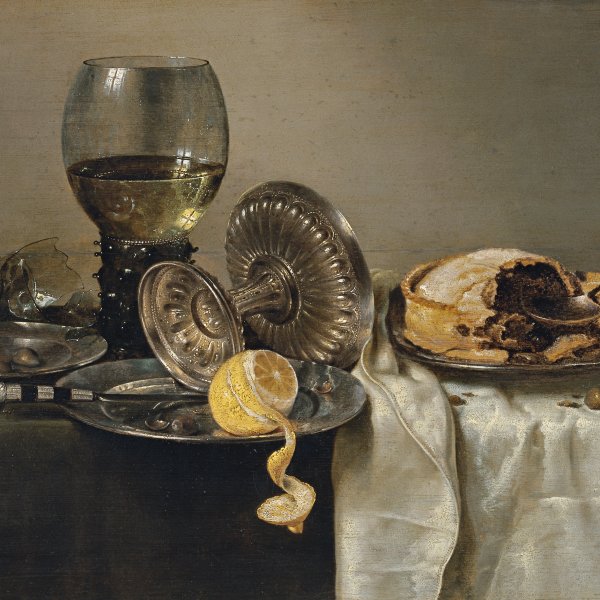Willem Claesz. Heda
Haarlem, 1593/94-1680
Willem Claesz. Heda was a Dutch still-life painter. He was born in 1593 or 1594 in Haarlem, where he spent his entire career. There are no surviving documents regarding his training or early career other than the date of 1621 on his first known work, a Vanitas composition. Together with Pieter Claesz., Heda developed a type of still life known as a “breakfast piece”. Hiscompositions are notable for the use of a monochromatic palette of greys and earthy browns and for the virtuoso depiction of the textures of the objects depicted.
In 1631 Heda is registered in the painter’s guild of Saint Luke in Haarlem, of which he was dean on various occasions from 1637 onwards. In the 1630s his style became fully mature, evident in his organisation of his compositions, which are no longer a random display of objects but now reveal a greater study of the pictorial space in a quest for equilibrium between the vertical and diagonal elements.
Despite the limited range of objects depicted and their repeated use in different paintings, Heda’s works are all unique. He also experimented with new formats such as vertical compositions, while also continuing to use the more classical horizontal format. During his last phase he introduced luxurious objects into his still lifes such as Venetian glasses, ornamental silver objects and costly oriental porcelain, probably influenced by Willem Kalf. Heda’s son and pupil, Gerrit Willemsz. Heda, also painted still lifes in a manner similar to his father, and their hands are difficult to distinguish. Among Heda’s followers were Maerten Boelema, Arnold van Beresteyn and the genre painter Hendrick Heersschoop.
In 1631 Heda is registered in the painter’s guild of Saint Luke in Haarlem, of which he was dean on various occasions from 1637 onwards. In the 1630s his style became fully mature, evident in his organisation of his compositions, which are no longer a random display of objects but now reveal a greater study of the pictorial space in a quest for equilibrium between the vertical and diagonal elements.
Despite the limited range of objects depicted and their repeated use in different paintings, Heda’s works are all unique. He also experimented with new formats such as vertical compositions, while also continuing to use the more classical horizontal format. During his last phase he introduced luxurious objects into his still lifes such as Venetian glasses, ornamental silver objects and costly oriental porcelain, probably influenced by Willem Kalf. Heda’s son and pupil, Gerrit Willemsz. Heda, also painted still lifes in a manner similar to his father, and their hands are difficult to distinguish. Among Heda’s followers were Maerten Boelema, Arnold van Beresteyn and the genre painter Hendrick Heersschoop.




